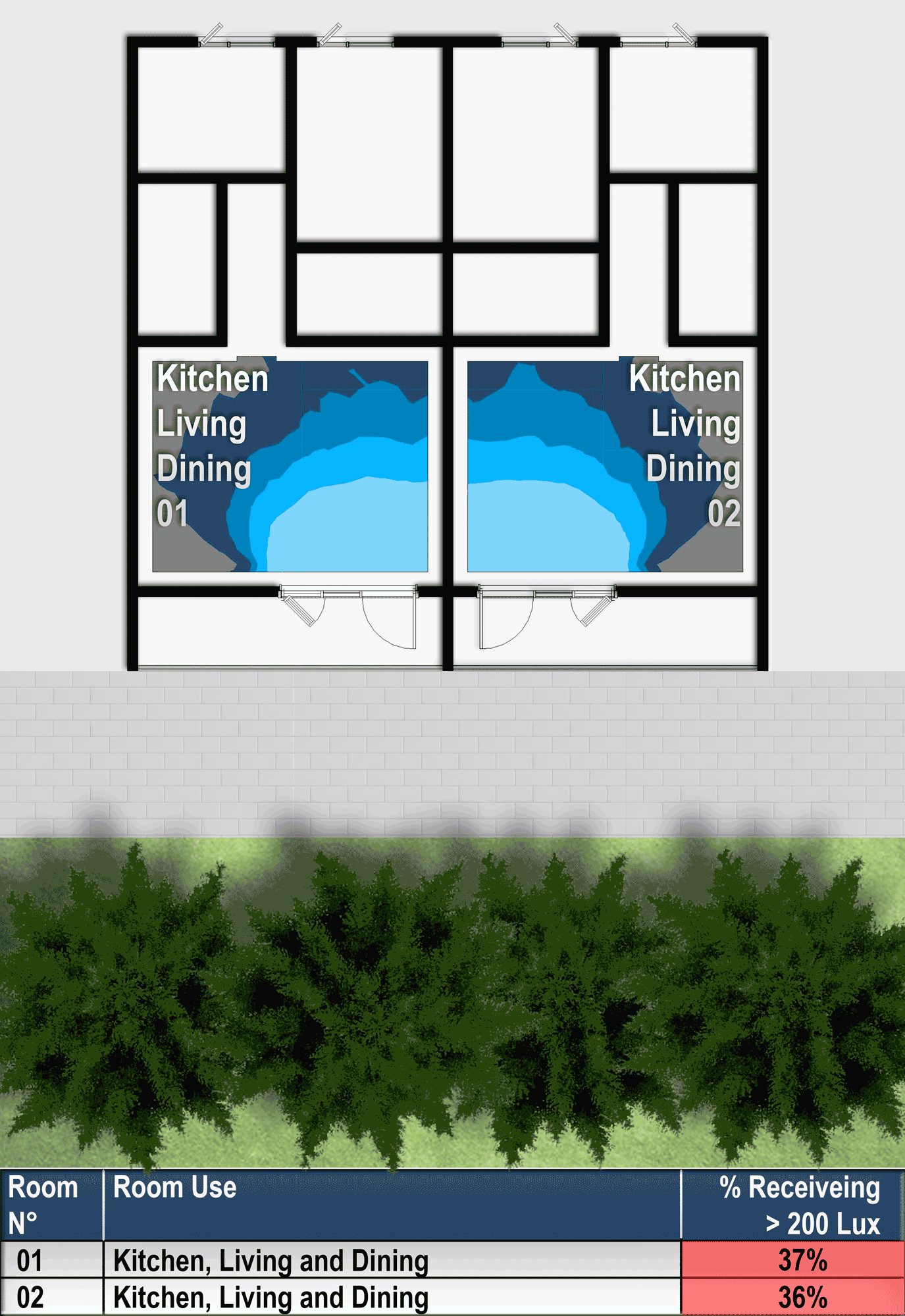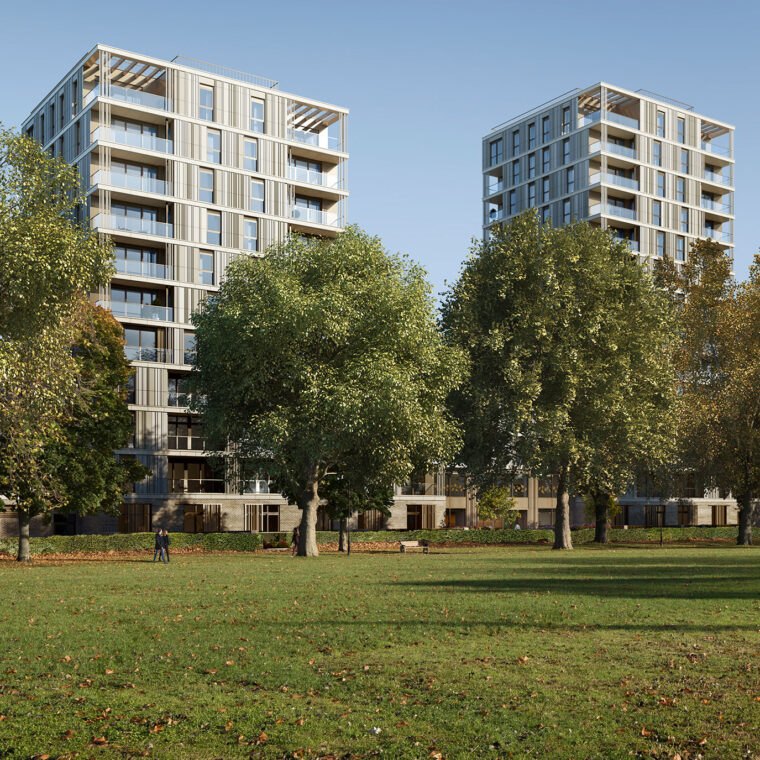
Summary
Proposed Scheme
- Existing trees, and proposed evergreens, must be included in the analysis of both the daylight and sunlight performance of the proposed scheme.
Existing Buildings
- Only proposed evergreens need to be considered when assessing existing buildings for loss of daylight and sunlight.
Gardens and Amenity Spaces
- Only proposed evergreens need to be considered when assessing the sunlight to existing or proposed gardens and amenity areas.
Proposed Scheme – Daylight Access in Rooms
The BRE Guide recommends that 50% of a reference plane area should exceed a specified illuminance level (e.g. 200 lux) for a specified number of annual hours, normally 50% of daylight hours, for a typical year. Trees can have an impact on the daylight received by new developments and must therefore be considered when making the assessment. The BRE Guide states:
“It is generally more difficult to calculate the effects of trees on daylight because of their irregular shapes and because some light will generally penetrate through the tree crown.”
“The calculation model should account for the obstruction to daylight caused by the trees. This needs to be done by modelling a representative shape of the trees.” and “The assessment should account for the transparency and reflectance of the trees, which can vary across the seasons.”
The BRE Guide includes transparency and reflectance values, both in summer and winter states, for typical tree species found in Ireland and the UK.
Assessment reports will include a daylight analysis with trees in both the summer and winter states, to reflect the two extreme cases. If the recommended values of daylight are exceeded in both summer and winter, then daylight would be considered adequate; and if the recommendations are not reached in both summer or winter then daylight would be considered inadequate. For a room where the recommendation is exceeded in winter, but not in summer, daylight provision year-round is likely to be adequate, but it is clear that the trees are having some effect on daylight.
Proposed Scheme – Sunlight Access in Rooms
To assess the sunlight provision for new buildings BS EN 17037 recommends the calculation of sunlight hours be carried out on 21st March, and that a habitable room receives at least 1.5 hours of sunlight. At this time of the year deciduous trees will not be in full leaf and some sunlight would be expected to penetrate. However, it would be impossible to calculate this accurately. The BRE Guide recommends:
“It is therefore recommended that where trees may affect sunlight provision, the calculations should first be carried out with deciduous trees as opaque objects …. The calculations could then be repeated without deciduous trees entirely. This gives the range of potential sunlight hours. Buildings and other solid objects should always be included. Evergreen trees where no light can penetrate all year round should also always be included as solid.”
and
“If the minimum recommendation is met with opaque trees then sunlight would be adequate. If the minimum recommendation is not reached with either opaque trees or no trees then sunlight would be considered inadequate. For a room where the recommendation is exceeded without trees, but not with opaque trees, sunlight provision may be adequate, but the trees will have some effect on the sunlight received.”
Loss of Daylight and Sunlight to Existing Buildings
While the potential impact of existing trees must be considered when assessing the daylight to proposed dwellings, trees do not need to be considered for existing buildings, unless a dense belt or group of evergreens is specifically planned as a windbreaker or for privacy purposes. The BRE Guide states:
“It is generally more difficult to calculate the effects of trees on daylight because of their irregular shapes and because some light will generally penetrate through the tree crown. Where the effect of a new building on existing buildings nearby is being analysed, it is usual to ignore the effect of existing trees. This is because daylight is at its scarcest and most valuable in winter when most trees will not be in leaf.”
Loss of Sunlight to Existing Gardens and Amenity Areas
In general, trees do not need to be considered when assessing potential loss of light to existing gardens and amenity spaces.
The BRE Guide states, in relation to sunlight in gardens:
“In assessing the impact of buildings on sunlight in gardens, trees and shrubs are not normally included in the calculation unless a dense belt or group of evergreens is specifically planned as a windbreak or for privacy purposes. This is partly because the dappled shade of a tree is more pleasant than the deep shadow of a building (this applies especially to deciduous trees).”


